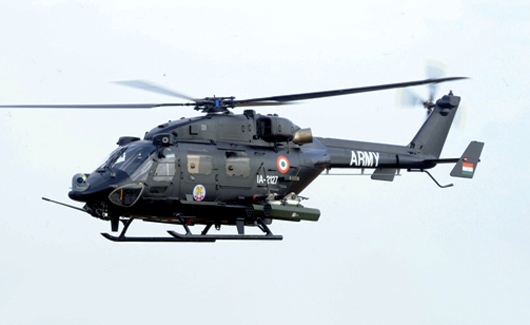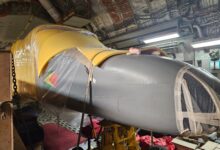HAL & SAFRAN Collaborate To Develop Engines For AMCA And Helicopters

- The smooth transfer of technology between India and France can be used as a model for future partnerships.
- In the area of defense, India and France have built a strong relationship based on trust, cooperation, and the sharing of information.
India and France have been working together on military aviation for a long time, and they are now ready to grow their defense cooperation, especially in advanced aeronautical technologies and industrial partnerships.
At the end of their talks, Prime Minister Narendra Modi and French President Emmanuel Macron signed the “Horizon 2047 Roadmap on the 25th Anniversary of the Indo-French Strategic Partnership: towards a century of French-Indian relations.” This was done on Friday in Paris.
The Horizon 2047 Roadmap shows that both countries want to work together for peace and security around the world. It also shows that both countries are still committed to a rules-based order in the Indo-Pacific and beyond.
India and France want to work together to promote peace and security around the world. They also want to show that they are still committed to a rules-based order in the Indo-Pacific and beyond. And, in order to make their Strategic Partnership even stronger, they agreed to work together more closely in the areas of the future. According to the document, the two sides will work together to develop and build engines for fighter jets and helicopters. They will do this by sharing their knowledge and skills.
The Joint Development of Combat Aircraft Engine:
India and France have made a big step forward by agreeing to work together on making an engine for combat planes. The Advanced Medium Combat Aircraft (AMCA) will use this engine.
In 2022, Financial Express Online said that the French company Safran was in talks with DRDO about making a 125kn engine for India’s fifth-generation AMCA together.
This project shows how much trust and cooperation there is between the two countries as they try to push the limits of technology innovation. India and France want to create cutting-edge aeronautical technologies that will improve their defenses by combining their different skills and resources.
Industry Working Together to Put Engines in Heavy-Lift Helicopters:
India and France have started a promising industry cooperation project called the Indian Multi Role Helicopter (IMRH) program. In particular, Safran Helicopter Engine, France, will be a key part of getting heavy-lift helicopters to fly on their own. This partnership has a lot of promise for both countries because it fits with India’s “Make in India” program and takes advantage of France’s technological skills. The recently signed Shareholders’ Agreement between Hindustan Aeronautics Limited (HAL) and Safran Helicopter Engine is a clear step toward making this ambitious program a reality.
Trust and Technology Transfer:
India and France work together on defense because they trust each other and share information. Both countries have shown over time that they are committed to sharing important parts and building blocks of technology. The smooth transfer of technology between India and France can be used as a model for future partnerships. One example is the deal between Safran Helicopter Engine and HAL for the Transfer of Technology of Forging and Castings for the Shakti Engine. This shows how much the French care about India’s “Make in India” initiative and how much they back technology transfer.
In the area of defense, India and France have built a strong relationship based on trust, cooperation, and the sharing of information. This connection is strong, as shown by the recent delivery of 36 Rafale fighter jets and the joint development of a fighter jet engine. Also, the industrial cooperation for motorizing heavy-lift helicopters and the technology transfer projects show that both countries are committed to improving their defense powers and helping their own industries grow. As India and France continue to work on their defense relationships, they will be able to shape the future of defense technologies and strengthen their place as strategic partners on the world stage.







Facebook Comments